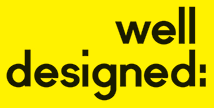



Discover and Purchase CAD/CAM/BIM/AEC/PDM Software from Autodesk.
Join Leading Product Engineers - Transform Your Ideas into Reality
Join a community of forward-thinking professionals using advanced Autodesk software. Stay ahead with ProCADis.com. Harness the power of Autodesk to bring your engineering projects to life!Product Management is the glue holding together products and services as they are being conceived of and built. Until now, product management was generally an engineering activity or a marketing role in a large corporation. In marketing, product management was called brand management and was heavily influenced by what competitors were doing. Brand managers studied massive amounts of quantitative pricing, sales, and trend data in order to make small shifts to soft goods or consumables. Their impact was derived from maximizing value from small market positioning shifts. In more engineering-centric corporations, like big software companies, product managers learned to gather requirements from stakeholders, mix them together into a series of features, and work with developers to launch software. Their role was heavily focused on developing software with a large breadth of features and functions that could be viewed as competitive.
But modern startups have proven that industry disruption is possible by focusing not on adding features or improving sales, but on providing deep, meaningful engagement to the people that use their products or services. This engagement is achieved by delivering simple products that have a soul: the products feel less like manufactured artifacts and more like good friends.
Achieving this type of emotional engagement is often considered a black art. But for social communities like Etsy or physical products like Nest Thermostat, product management is a competency rooted in the field of design. Design doesn't refer only to aesthetics or usability, although those are things consumers are most likely to see or appreciate. It is a more comprehensive way of thinking about people and human behavior, and it is a product development process that features empathy with a community of potential consumers in order to identify problems to solve. This process leverages pattern matching in order to "infer" solutions to those problems that will have meaningful emotional appeal. Designer and consultant Jon Kolko has been engaged in this process of design for over 15 years, and has perfected a repeatable, teachable set of steps for identifying lucrative opportunities, designing for innovation, and producing products that have deep, meaningful emotional engagement.
Well Designed presents Kolko's process for building and shipping powerful, emotionally resonant offerings. This process has four steps:
- Identify product/market fit, by seeking signals from communities of users
- Determine behavioural insights, by conducting ethnographic research
- Sketch a product strategy, by synthesizing complex research data into simple insights
- Polish the product details, using visual representations to simplify complex ideas
Well Designed offers an end-to-end process with specific, proven methods and techniques. Through example and lessons, as well as interviews with product managers for some of the world's best-known products and services, readers will learn how to use a process of design thinking to develop their own engaging products. They will learn:
- That empathy is the key to building meaningful products, and empathy can be taught and learned
- How to work through the complexity of human and qualitative research in order to arrive at the simplicity of a new offering
- That a product's personality—which is critical to its success—can be established through a rigorous process of ideation
- How to sketch visual representations that help communicate a vision of the future to a small team of cofounders or a large group of stakeholders
By following the process and methods described in Well Designed, readers will learn how to raise the role of design to a strategic competency. They will help shift the trajectory of their respective organizations, and they will be able to successfully identify and seize new opportunities to develop innovative products.
Chapter 1: By Design
The Scope of a Product
Wait, That's Really Someone's Job?
What is Design Thinking?
Bringing Design Thinking to Product Management
An Interview with Joe Gebbia, on Creative Roles and Intuition
Chapter 2: Product/Market Fit: Finding Broad Appeal
What is "The Market"?
Seeking Signals from the Market
Frameworks to Synthesize Product/Market Signals
An Interview with Josh Elman, on the Process of Product Management
Chapter 3: Behavioral Insights: Identifying Latent Needs and Desires
Observing Human Behavior
Seeking Signals from People
Frameworks to Synthesize Behavioral Insights
An Interview with Gary Chou, on the Spirit and Soul of Product Development
Chapter 4: Product Strategy: Sketching a Playbook of Emotional Value
Understanding Design Strategy
Identifying the Emotional Value Proposition
Developing a Product Stance
Considering Analogous Situations
An interview with Mark Phillip, on Restraint in Product Decisions
Chapter 5: Product Vision: Crafting the Product Details
Defining the Product
Exploring, though Iteration and Variation
Recruiting People to the Product Vision
An Interview with Frank Lyman, on the Career of Product Management
Chapter 6: Shipping
Building and Leveraging a Product Roadmap
Sweating the Details
Taking a Proactive Stance
An Interview with Alex Rainert, on Growing a Product and a Business